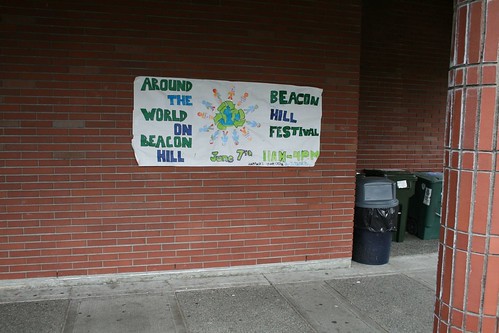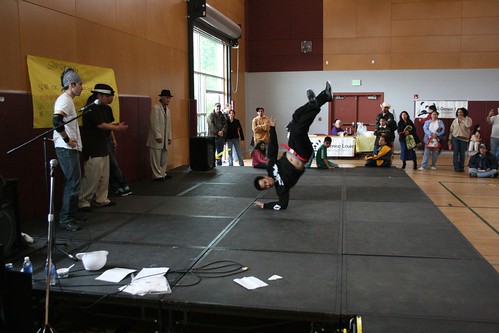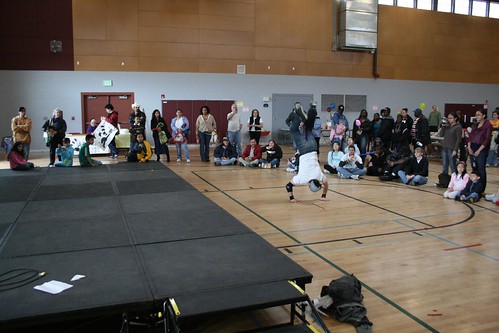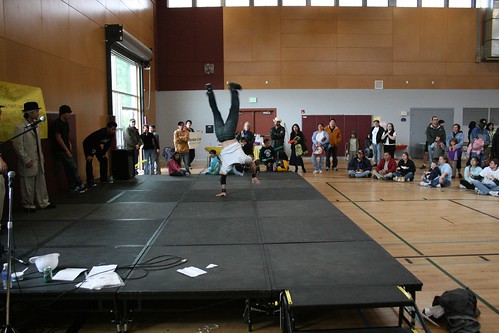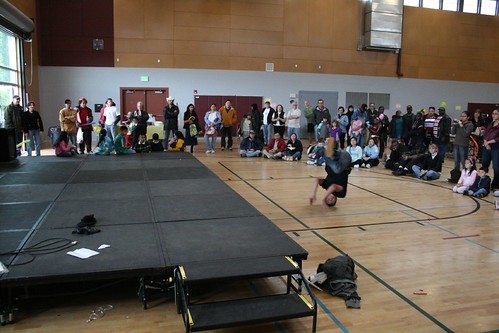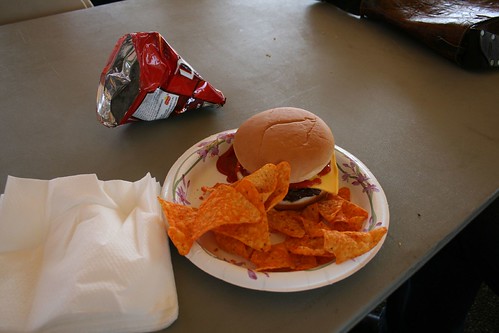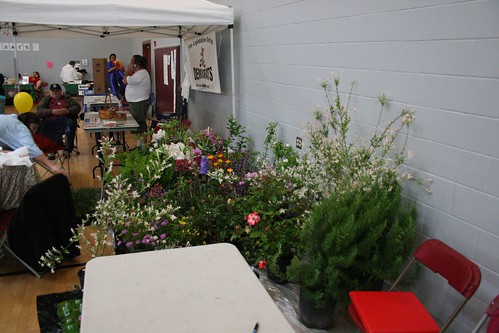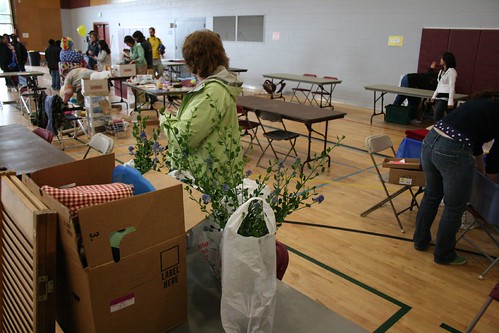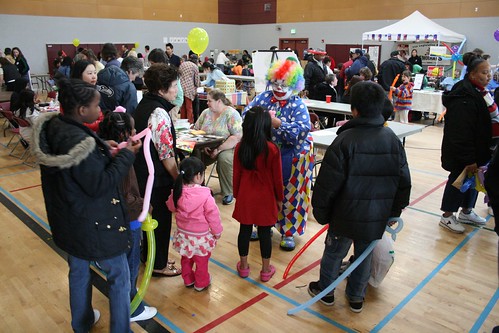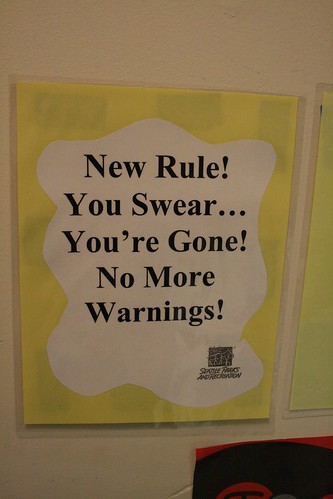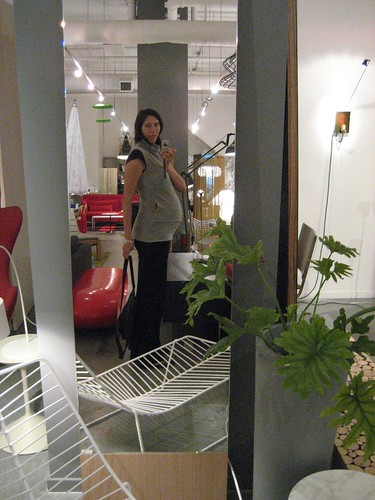As I mentioned in the last post, Thursday night we discovered a swarm of honeybees in the plum tree in our backyard. The night was warm, so half of them were still out and about, but the other half were home, protecting their queen. Again, here's a picture of the solid ball of bees, all settled on top of each other.
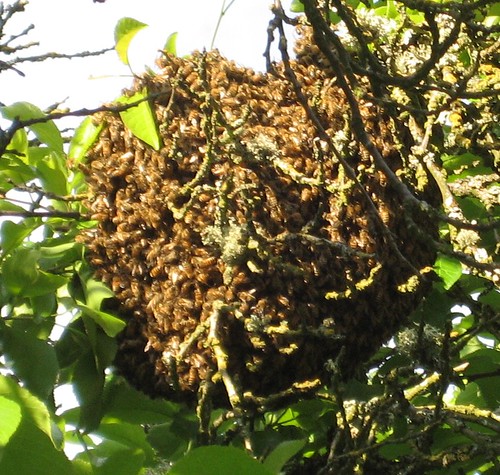
We looked up resources for honeybee removal and called
Jerry the Bee Guy, who would take them for free and find a good home for them. In fact, he was available the very next morning (by which time the ball of bees was twice as large).
He said he didn't used to wear his protective hat when collecting swarms because honeybees in this state are usually very docile. But once in a while he'd run into a genetically aggressive bunch, so now he wears his gear, just in case.
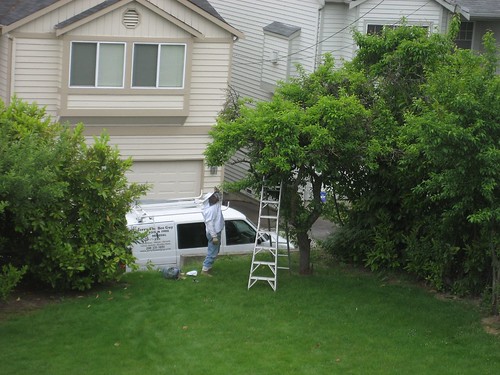
He told us that the swarm, like all swarms, was in transit, and it wasn't likely to stay in our plum tree very long. Honeybees prefer more sheltered spaces, like a hollowed-out tree or a nice warm attic. The queen bee had just stopped to rest while worker bees scouted out potential homes. If they had taken up residence in someone's attic and started a hive, it probably would have damaged the house. It also would have been much harder to remove them, and they may have ended up getting destroyed.
So I felt OK about them getting vacuumed up into Jerry's water cooler jugs. He's either going to take them to his own apiary in Monroe, or sell them to another apiary. He said these seemed like very nice bees.
One of the jugs.

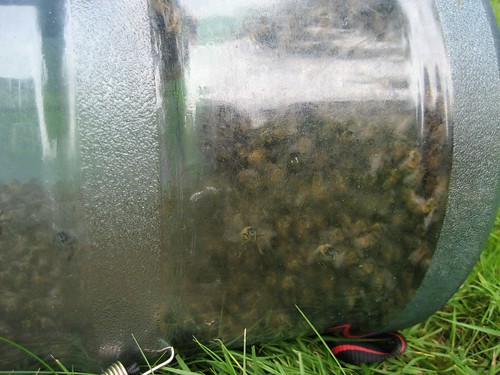
The other jug.
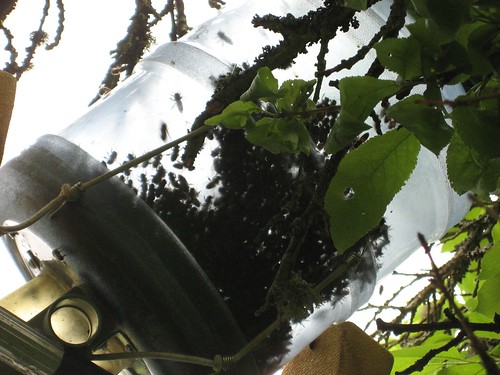
He told us that this swarm -- which he calculated at 30,000 strong, a very healthy-sized swarm -- recently started from an established hive somewhere within two miles. The hive had developed a second queen bee, so the first one needed to leave, taking one-third to one-half of the hive with her.
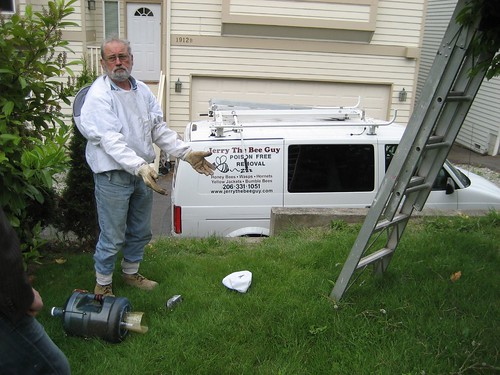
When Jerry was done vacuuming, he said he thought he'd collected 99.7% of the honeybees. And he said the stragglers would likely return to the original hive, where they would be welcomed back, despite their traitorous ways.
Unfortunately, he wasn't absolutely positive that he collected the queen, or that she would have survived the vacuum process. She's very fragile now, with a heavy abdomen swollen up with eggs. He told me he'd know in a couple days and that I could check in with him to find out what happened.
So I e-mailed him this morning, and we're still not sure, but things are looking good so far:
"I plan to open the box today when it gets a little warmer. It looks like a GREAT swarm so far. When I put them in the box here they displayed all the signs of the queen being present, so I have high hopes for this colony. I'll let you know when I have confirmed my guess."
And I'll let you know when he does.
Update. Heard from Jerry:
"I found the queen today....she's a nice, fat, healthy lady. I also got an email this morning from a beekeeper friend who has lost a colony, so I am going to pass this swarm colony on to her. The timing was good and everyone will be happy, including the bees. Thanks for calling me to get the swarm."
Unrelated P.S. Congratulations to my friend
Phyllis Fletcher, who last night won a first-place regional Society of Professional Journalists award for
this NPR story about the NCAA.

